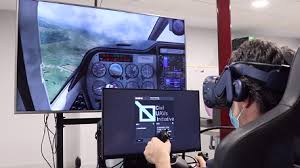NEW DELHI: The Indian Air Force (IAF), in collaboration with Chitkara University, near Chandigarh, has developed an advanced Virtual Reality (VR) system to train newly inducted Agniveers on the process of refuelling aircraft.
The VR-based system allows trainees to don a head-mounted device and experience a realistic virtual environment featuring aircraft and its subsystems. It eliminates the need for physical aircraft, enabling trainees to practice the complex process.
The system provides training in a compressed timeframe, which is advantageous as the initial term of Agniveers is just four years, thereby reducing the overall time utilised for training.
The first such system has been developed for training aircrew to refuel the helicopters. It can also be modified to impart training on other aircraft in the IAF’s inventory.
“Aircraft refuelling is a complex activity that includes movement and parking vehicles in an aircraft’s vicinity, operating pumping equipment, blending anti-freeze additives, ensuring proper earthing and filling the correct volume of fuel. There are several technical, environmental and safety factors involved,” Dr PK Khosla, a former DRDO-TBRL scientist and now pro-vice chancellor of the university, who along with Dr Amanpreet Kaur headed the project team, said. It took about six months for team to complete the project. “The system has been handed over to the IAF,” added pro chancellor Dr Madhu Chitkara.
VR solutions are highly engaging, error-tolerant and foster faster learning without risking damage to actual equipment or aircraft. Such systems aids can be developed for imparting training on a vast array of subjects.
The development process involved close collaboration with defence experts to map the intricate details of helicopter refuelling operations. Every component, from fuel couplings to control panels, was meticulously modelled in 3D.
Advanced haptic feedback systems, that is devices which create the illusion of substance and force within the virtual world, and motion-tracking algorithms were incorporated to enhance realism to provide trainees with a near-physical experience that significantly improves skill acquisition and retention.


